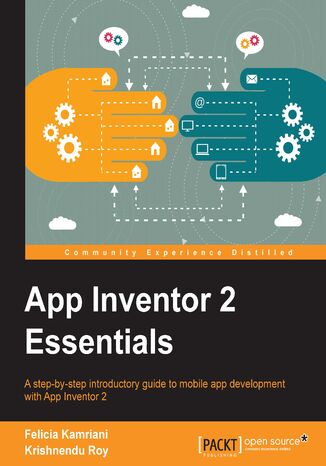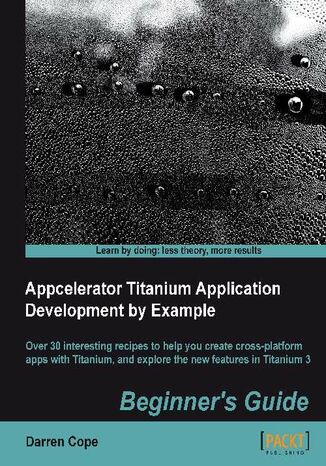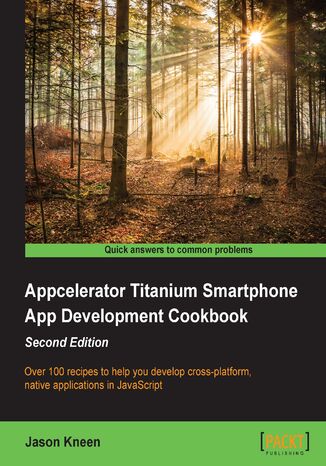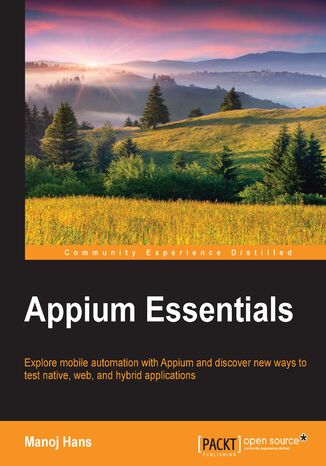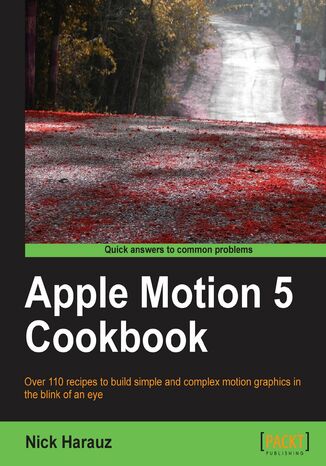Kategorie
Ebooki
-
Biznes i ekonomia
- Bitcoin
- Bizneswoman
- Coaching
- Controlling
- E-biznes
- Ekonomia
- Finanse
- Giełda i inwestycje
- Kompetencje osobiste
- Komputer w biurze
- Komunikacja i negocjacje
- Mała firma
- Marketing
- Motywacja
- Multimedialne szkolenia
- Nieruchomości
- Perswazja i NLP
- Podatki
- Polityka społeczna
- Poradniki
- Prezentacje
- Przywództwo
- Public Relation
- Raporty, analizy
- Sekret
- Social Media
- Sprzedaż
- Start-up
- Twoja kariera
- Zarządzanie
- Zarządzanie projektami
- Zasoby ludzkie (HR)
-
Dla dzieci
-
Dla młodzieży
-
Edukacja
-
Encyklopedie, słowniki
-
E-prasa
- Architektura i wnętrza
- BHP
- Biznes i Ekonomia
- Dom i ogród
- E-Biznes
- Ekonomia i finanse
- Ezoteryka
- Finanse
- Finanse osobiste
- Firma
- Fotografia
- Informatyka
- Kadry i płace
- Kobieca
- Komputery, Excel
- Księgowość
- Kultura i literatura
- Naukowe i akademickie
- Ochrona środowiska
- Opiniotwórcze
- Oświata
- Podatki
- Podróże
- Psychologia
- Religia
- Rolnictwo
- Rynek książki i prasy
- Transport i Spedycja
- Zdrowie i uroda
-
Historia
-
Informatyka
- Aplikacje biurowe
- Bazy danych
- Bioinformatyka
- Biznes IT
- CAD/CAM
- Digital Lifestyle
- DTP
- Elektronika
- Fotografia cyfrowa
- Grafika komputerowa
- Gry
- Hacking
- Hardware
- IT w ekonomii
- Pakiety naukowe
- Podręczniki szkolne
- Podstawy komputera
- Programowanie
- Programowanie mobilne
- Serwery internetowe
- Sieci komputerowe
- Start-up
- Systemy operacyjne
- Sztuczna inteligencja
- Technologia dla dzieci
- Webmasterstwo
-
Inne
-
Języki obce
-
Kultura i sztuka
-
Lektury szkolne
-
Literatura
- Antologie
- Ballada
- Biografie i autobiografie
- Dla dorosłych
- Dramat
- Dzienniki, pamiętniki, listy
- Epos, epopeja
- Esej
- Fantastyka i science-fiction
- Felietony
- Fikcja
- Humor, satyra
- Inne
- Klasyczna
- Kryminał
- Literatura faktu
- Literatura piękna
- Mity i legendy
- Nobliści
- Nowele
- Obyczajowa
- Okultyzm i magia
- Opowiadania
- Pamiętniki
- Podróże
- Poemat
- Poezja
- Polityka
- Popularnonaukowa
- Powieść
- Powieść historyczna
- Proza
- Przygodowa
- Publicystyka
- Reportaż
- Romans i literatura obyczajowa
- Sensacja
- Thriller, Horror
- Wywiady i wspomnienia
-
Nauki przyrodnicze
-
Nauki społeczne
-
Podręczniki szkolne
-
Popularnonaukowe i akademickie
- Archeologia
- Bibliotekoznawstwo
- Filmoznawstwo
- Filologia
- Filologia polska
- Filozofia
- Finanse i bankowość
- Geografia
- Gospodarka
- Handel. Gospodarka światowa
- Historia i archeologia
- Historia sztuki i architektury
- Kulturoznawstwo
- Lingwistyka
- Literaturoznawstwo
- Logistyka
- Matematyka
- Medycyna
- Nauki humanistyczne
- Pedagogika
- Pomoce naukowe
- Popularnonaukowa
- Pozostałe
- Psychologia
- Socjologia
- Teatrologia
- Teologia
- Teorie i nauki ekonomiczne
- Transport i spedycja
- Wychowanie fizyczne
- Zarządzanie i marketing
-
Poradniki
-
Poradniki do gier
-
Poradniki zawodowe i specjalistyczne
-
Prawo
- BHP
- Historia
- Kodeks drogowy. Prawo jazdy
- Nauki prawne
- Ochrona zdrowia
- Ogólne, kompendium wiedzy
- Podręczniki akademickie
- Pozostałe
- Prawo budowlane i lokalowe
- Prawo cywilne
- Prawo finansowe
- Prawo gospodarcze
- Prawo gospodarcze i handlowe
- Prawo karne
- Prawo karne. Przestępstwa karne. Kryminologia
- Prawo międzynarodowe
- Prawo międzynarodowe i zagraniczne
- Prawo ochrony zdrowia
- Prawo oświatowe
- Prawo podatkowe
- Prawo pracy i ubezpieczeń społecznych
- Prawo publiczne, konstytucyjne i administracyjne
- Prawo rodzinne i opiekuńcze
- Prawo rolne
- Prawo socjalne, prawo pracy
- Prawo Unii Europejskiej
- Przemysł
- Rolne i ochrona środowiska
- Słowniki i encyklopedie
- Zamówienia publiczne
- Zarządzanie
-
Przewodniki i podróże
- Afryka
- Albumy
- Ameryka Południowa
- Ameryka Środkowa i Północna
- Australia, Nowa Zelandia, Oceania
- Austria
- Azja
- Bałkany
- Bliski Wschód
- Bułgaria
- Chiny
- Chorwacja
- Czechy
- Dania
- Egipt
- Estonia
- Europa
- Francja
- Góry
- Grecja
- Hiszpania
- Holandia
- Islandia
- Litwa
- Łotwa
- Mapy, Plany miast, Atlasy
- Miniprzewodniki
- Niemcy
- Norwegia
- Podróże aktywne
- Polska
- Portugalia
- Pozostałe
- Przewodniki po hotelach i restauracjach
- Rosja
- Rumunia
- Słowacja
- Słowenia
- Szwajcaria
- Szwecja
- Świat
- Turcja
- Ukraina
- Węgry
- Wielka Brytania
- Włochy
-
Psychologia
- Filozofie życiowe
- Kompetencje psychospołeczne
- Komunikacja międzyludzka
- Mindfulness
- Ogólne
- Perswazja i NLP
- Psychologia akademicka
- Psychologia duszy i umysłu
- Psychologia pracy
- Relacje i związki
- Rodzicielstwo i psychologia dziecka
- Rozwiązywanie problemów
- Rozwój intelektualny
- Sekret
- Seksualność
- Uwodzenie
- Wygląd i wizerunek
- Życiowe filozofie
-
Religia
-
Sport, fitness, diety
-
Technika i mechanika
Audiobooki
-
Biznes i ekonomia
- Bitcoin
- Bizneswoman
- Coaching
- Controlling
- E-biznes
- Ekonomia
- Finanse
- Giełda i inwestycje
- Kompetencje osobiste
- Komunikacja i negocjacje
- Mała firma
- Marketing
- Motywacja
- Nieruchomości
- Perswazja i NLP
- Podatki
- Polityka społeczna
- Poradniki
- Prezentacje
- Przywództwo
- Public Relation
- Sekret
- Social Media
- Sprzedaż
- Start-up
- Twoja kariera
- Zarządzanie
- Zarządzanie projektami
- Zasoby ludzkie (HR)
-
Dla dzieci
-
Dla młodzieży
-
Edukacja
-
Encyklopedie, słowniki
-
E-prasa
-
Historia
-
Informatyka
-
Inne
-
Języki obce
-
Kultura i sztuka
-
Lektury szkolne
-
Literatura
- Antologie
- Ballada
- Biografie i autobiografie
- Dla dorosłych
- Dramat
- Dzienniki, pamiętniki, listy
- Epos, epopeja
- Esej
- Fantastyka i science-fiction
- Felietony
- Fikcja
- Humor, satyra
- Inne
- Klasyczna
- Kryminał
- Literatura faktu
- Literatura piękna
- Mity i legendy
- Nobliści
- Nowele
- Obyczajowa
- Okultyzm i magia
- Opowiadania
- Pamiętniki
- Podróże
- Poezja
- Polityka
- Popularnonaukowa
- Powieść
- Powieść historyczna
- Proza
- Przygodowa
- Publicystyka
- Reportaż
- Romans i literatura obyczajowa
- Sensacja
- Thriller, Horror
- Wywiady i wspomnienia
-
Nauki przyrodnicze
-
Nauki społeczne
-
Popularnonaukowe i akademickie
-
Poradniki
-
Poradniki zawodowe i specjalistyczne
-
Prawo
-
Przewodniki i podróże
-
Psychologia
- Filozofie życiowe
- Komunikacja międzyludzka
- Mindfulness
- Ogólne
- Perswazja i NLP
- Psychologia akademicka
- Psychologia duszy i umysłu
- Psychologia pracy
- Relacje i związki
- Rodzicielstwo i psychologia dziecka
- Rozwiązywanie problemów
- Rozwój intelektualny
- Sekret
- Seksualność
- Uwodzenie
- Wygląd i wizerunek
- Życiowe filozofie
-
Religia
-
Sport, fitness, diety
-
Technika i mechanika
Kursy video
-
Bazy danych
-
Big Data
-
Biznes, ekonomia i marketing
-
Cyberbezpieczeństwo
-
Data Science
-
DevOps
-
Dla dzieci
-
Elektronika
-
Grafika/Wideo/CAX
-
Gry
-
Microsoft Office
-
Narzędzia programistyczne
-
Programowanie
-
Rozwój osobisty
-
Sieci komputerowe
-
Systemy operacyjne
-
Testowanie oprogramowania
-
Urządzenia mobilne
-
UX/UI
-
Web development
-
Zarządzanie
Podcasty
Apostrofa Dałem ci żywot mój, to nie wiele! Żywotów takich tysiąc dziś przepada, Dałem ci miłość mą, o aniele! Lecz cóż z miłości, co jak łez kaskada Kołysze ucho twe w takt i pieści, A w strofie życia piorunów nie mieści?... Mamże jak Narcyz stać, wdzięczny sobie I roznamiętniać się odbitym cieniem? Grobu niesławę czcić na twym grobie, Schlebiać ci tylko łzami i cierpieniem, I gdy ci mieczów brak, nieść ci róże, Co na Cezarów więdnieją purpurze? O, precz mi z drogi tej! ja nie mogę Płatnych służalców zwykłą iść koleją, Ja widzę hańby znak, w oczach trwogę, Ręce, co światu pogrozić nie śmieją; Więc rzucam gniewu krzyk i wściekłości, I grobu twego znieważam świętości! Ja dla męczarni twych wzgardę czuję, Bo ty frymarczysz krwią twą, Messalino! Wierna przeszłości tej, co cię truje, Gdy pokolenia całe bez czci giną, Pod tryumfalny wóz zawleczona, Gotowaś upaść liktorom w ramiona. Spartaków wprzódy syn, niż twój czciciel, Rachunku żądam od ciebie, przeklęta, Przeszłości krwawych krzywd smutny mściciel Pytam: gdzie? w bolach ludzkości poczęta A przekazana myśl jednej tobie, Arystodemów ty wdowo w żałobie! [...]Adam AsnykUr. 11 listopada 1838 r. w Kaliszu Zm. 2 sierpnia 1897 r. w Krakowie Najważniejsze dzieła: Pijąc Falerno, Piosnka pijacka, Między nami nic nie było, Gdybym był młodszy, Jednego serca..., Nad głębiami (cykl sonetów), Daremne żale, Do młodych Poeta, epigon romantyzmu tworzący w epoce pozytywizmu i Młodej Polski, autor dramatów i opowiadań. Syn powstańca 1831 r., zesłańca. Podejmował różne kierunki studiów (rolnicze, medyczne, nauki społeczne), prowadząc działalność spiskową. Był więziony w Cytadeli (1860). W powstaniu styczniowym zaangażowany po stronie ?czerwonych?, był członkiem rządu wrześniowego. Po upadku zrywu uzyskał stopień dra filozofii w Heidelbergu (1866), zaczął wydawać pierwsze utwory w prasie lwowskiej (1864-65). W 1870 r. osiadł w Krakowie, brał czynny udział w życiu samorządowym, był posłem na Sejm Krajowy z ramienia demokratów (1889). Amator Tatr, wiele podróżował (Włochy, Tunezja, Algieria, Cejlon, Indie). Pochowany na Skałce. Kupując książkę wspierasz fundację Nowoczesna Polska, która propaguje ideę wolnej kultury. Wolne Lektury to biblioteka internetowa, rozwijana pod patronatem Ministerstwa Edukacji Narodowej. W jej zbiorach znajduje się kilka tysięcy utworów, w tym wiele lektur szkolnych zalecanych do użytku przez MEN, które trafiły już do domeny publicznej. Wszystkie dzieła są odpowiednio opracowane - opatrzone przypisami oraz motywami.
Jerzy Liebert Druga ojczyzna Apostrofa Tam, gdzie niebo półkręgiem płaszcz na ziemię zsuwa Jak powiekę różową od łez, Ranek pąsy na chmurach leciutkich nakłuwa, W twarze błękit nam ciska jak bez. Blade palce na ustach Twych błyszczą jak wino, W pocałunku powietrznym drży dłoń, Bądź zdrowa, miła moja, nim z gwiazdami spłyną Łzy gorące, jak świt, na Twą skroń. Na twarde, męskie serce składasz dzisiaj ręce Jak wianuszek z konwalii i róż, Pewniejsze to i trwalsze nad... Jerzy Liebert Ur. ur. 24 lipca 1904 w Częstochowie Zm. zm. 19 czerwca 1931 w Warszawie Najważniejsze dzieła: tomiki poezji Druga ojczyzna (1925), Gusła (1930), Kołysanka jodłowa (1932); zbiór korespondencji Listy do Agnieszki Poezja Lieberta stanowi zapis jego poszukiwań metafizycznych. Tematyka religijno-filozoficzna przejawia się już w debiutanckim wierszu Zmartwychwstanie. Modlitwa młodego poety, opublikowanym w chrześcijańskim Czynie. Związany ze środowiskiem Skamandrytów, przyjaźnił się Liebert z Jarosławem Iwaszkiewiczem, publikował w Skamandrze i Wiadomościach literackich. Ważną relacją była dla poety przyjaźń z Bronisławą Wajngold, która przyjęła chrzest jako Agnieszka, a następnie wstąpiła do zakonu franciszkanek. Za jej przyczyną Liebert znalazł się w kręgu inteligencji katolickiej, związanym z ośrodkiem zakonnym w podwarszawskich Laskach, czytał filozofów chrześcijańskich i brał udział w dyskusjach na temat tych lektur. Dziennikiem tych przeżyć są Listy do Agnieszki. Studiował polonistykę na Wydziale Filozofii Uniwersytetu Warszawskiego, ale ukończenie studiów uniemożliwiła mu gruźlica i kłopoty materialne. Dzięki wsparciu przyjaciół wyjeżdżał na kuracje do Worochty. Zmarł w Warszawie w wieku 27 lat. Kupując książkę wspierasz fundację Nowoczesna Polska, która propaguje ideę wolnej kultury. Wolne Lektury to biblioteka internetowa, rozwijana pod patronatem Ministerstwa Edukacji Narodowej. W jej zbiorach znajduje się kilka tysięcy utworów, w tym wiele lektur szkolnych zalecanych do użytku przez MEN, które trafiły już do domeny publicznej. Wszystkie dzieła są odpowiednio opracowane - opatrzone przypisami oraz motywami.
Apoteoza Gdy ból milionów długi i przewlekły Twoją pierś młodą obrał za swe gniazdo, Żłobiąc na czole cierniem wieszcza znamię -- Gdy oczy tłumów mgły zwątpień powlekły, W próżnym pościgu za nadziei gwiazdą I gdy opadło w dół bezsilne ramię -- Ty, dróg szukając błędnym życia rzekom, Z którymi serce płomienne się wiodło, I skostniałego świata rwąc wędzidła, -- Rzuciłeś wtedy wszystkim świata wiekom To wulkaniczne, niestygnące godło: Młodości, podaj mi skrzydła! I usłyszały młode pokolenia Te słowa wiecznie młode i płomienne, Budzące w duszy Ikarowe loty, I Prometejów śmiałe wysilenia, I dni niepokój, i noce bezsenne, I wszystkie rannej młodości tęsknoty. [...]Franciszek NowickiUr. 29 stycznia 1864 w Krakowie Zm. 3 września 1932 w Zawoi Najważniejsze dzieła: Pieśni czasu (1904) Poeta okresu Młodej Polski. W czasie studiów na krakowskim uniwersytecie związany z radykalną Czytelnią Akademicką i czasopismem ?Ognisko?; działacz ruchu ludowego; socjalista, współzałożyciel PPSD, współpracował z pismem ?Naprzód. Był jednym z oskarżonych (obok m.in. Daszyńskiego) w tzw. procesie młodzieży w 1891 r.; został wydalony z UJ; dokończył studia na wydziale filozoficznym w Wiedniu. Przez 20 lat (1894-1924) był nauczycielem, zaś z zamiłowania taternikiem; do jego zasług zalicza się wytyczenie szlaku na Orlą Perć. W twórczości literackiej Nowickiego najbardziej charakterystyczne są motywy tatrzańskie oraz akcenty radykalnie lewicowego zaangażowania społecznego. Jest autorem przekładu Hermana i Doroty Goethego.Kupując książkę wspierasz fundację Nowoczesna Polska, która propaguje ideę wolnej kultury. Wolne Lektury to biblioteka internetowa, rozwijana pod patronatem Ministerstwa Edukacji Narodowej. W jej zbiorach znajduje się kilka tysięcy utworów, w tym wiele lektur szkolnych zalecanych do użytku przez MEN, które trafiły już do domeny publicznej. Wszystkie dzieła są odpowiednio opracowane - opatrzone przypisami oraz motywami.
Felicia Kamriani, Krishnendu Roy
App Inventor 2 will take you on a journey of mobile app development. We begin by introducing you to the functionalities of App Inventor and giving you an idea about the types of apps you can develop using it. We walk you through the technical set up so you can take advantage of the interactive development environment (live testing). You will get hands-on, practical experience building three different apps using tutorials. Along the way, you will learn computer science principles as well as tips to help you prepare for the creative process of building an app from scratch. By the end of the journey, you will learn how to package an app and deploy it to app markets. App Inventor 2 Essentials prepares you to amass a resource of skills, knowledge and experience to become a mobile app developer
Appcelerator Titanium is the leading method for creating native cross-platform apps. This book guides you from the initial stages with the language right through to the submission of your app to the marketplace/app store. Specially crafted examples cover the most common requirements of an app programmer. This book will be your companion as you progress with the language.Appcelerator Titanium Application Development by Example Beginner's Guide will guide you through the process of designing cross-platform apps using Titanium. It covers all areas of the language from installation through development to submission to the store. This book will take a hands-on approach in teaching you how to write cross-platform apps using Titanium, as well as exploring the new features of Titanium 3. Each chapter will show you how to overcome specific challenges using Titanium. You will learn how to design your apps using MVC principles and Alloy, use the cloud to your advantage, develop apps that work on tablets and phones, use the phone gadgets like the accelerometer, integrate social media, record usage using analytics, and monetise your app. All tasks from installation to deployment to the store are covered and backed by examples. The book will be your companion from your first steps with Titanium to successful live deployment.
Boydlee Pollentine, Jason Kneen, Jason Kneen
This book will take you through the process of building cross-platform, native UI applications for the mobile from scratch. You will learn how to develop apps, how to use GPS, cameras and photos and how to build socially connected apps. You will also learn how to package them for submission to the App Store and Google Play.This cookbook takes a pragmatic approach to creating applications in JavaScript from putting together basic UIs, to handling events and implementation of third party services such as Twitter, Facebook and Push notifications. The book shows you how to integrate datasources and server APIs, and how to use local databases. The topics covered will guide you to use Appcelerator Studio tools for all the mobile features such as Geolocation, Accelerometer, animation and more. You’ll also learn about Alloy, the Appcelerator MVC framework for rapid app development, and how to transfer data between applications using URLSchemes, enabling other developers to access and launch specific parts of your app.Finally, you will learn how to register developer accounts and publish your very own applications on the App Store and Google Play.
Let's face it, people like images that move. Whether you see images on a moving billboard, walk into a bank with an LCD screen, watch TV, or surf the Web, motion graphics are everywhere. With an even greater demand to integrate motion graphics in just about every type of video or interactive content there is, this book will help you get there with Motion 5. It's all about creating eye-catching titles, transitions, and effects!Apple Motion 5 Cookbook contains exercises for the beginner and seasoned motion graphics user. You will learn how to navigate Motion's interface and quickly grasp the tools available to you while creating sophisticated and sleek animations in both 2D and 3D environments. Not forgetting visual effects, we will also explore motion tracking and green screen techniques that will help you composite like a pro. Let's launch the application, grab a cup of coffee, and get started on this exciting journey!The exercises will take you right from creating your very first Motion project through to export. You will learn how to navigate quickly and efficiently through Motion's complex interface and toolsets so that you can focus oncreating your masterpiece!You will learn how to create a new project and import material into that project from the File Browser and Motion's vast and rich content library. From there, you will learn to manipulate and animate these source files using Motion's behaviors, classic keyframing techniques, adding filters, and master the built-in tools such as particle systems that will knock your socks off! Last but not least, you will export your projects to a variety of different formats including DVD, as a Final Cut Pro generator, and the Web.The Apple Motion 5 Cookbook contains downloadable content for each chapter and is packed with screenshots and illustrations. After reading this book, you'll be creating motion graphics and visual effects in no time!




